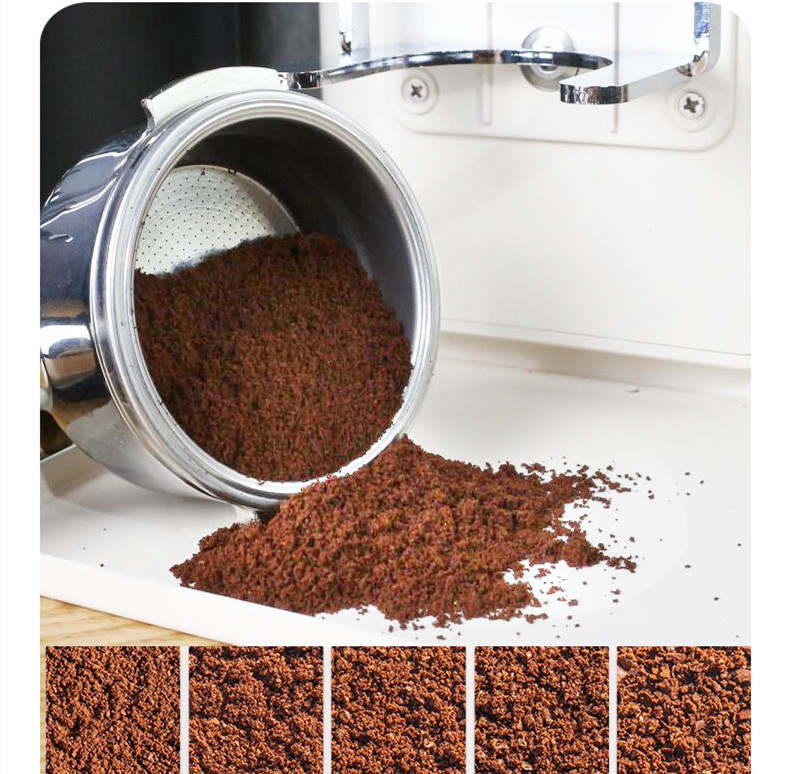Grinding Essentials for Cappuccino Coffee: Crafting the Ideal Espresso Foundation
A cappuccino’s signature balance of bold espresso, steamed milk, and velvety foam relies heavily on the coffee’s grind quality. Since espresso forms the base, the grind must enable precise extraction under high pressure to harmonize with milk’s sweetness. Here’s how to optimize your grinding technique for café-quality results.
The Role of Grind Size in Cappuccino Espresso
Cappuccinos demand a fine grind, similar to table salt or powdered sugar, to create the resistance needed for proper espresso extraction. This texture ensures water flows through the coffee puck at the correct rate, extracting oils, sugars, and acids without over- or under-extraction.
- Too Coarse: A gritty grind lets water pass too quickly, producing weak, sour espresso with little crema. The cappuccino will taste diluted and lack depth.
- Too Fine: A powdery grind restricts water flow, leading to over-extraction. The espresso becomes bitter, making it challenging to balance with milk’s sweetness.
Fine-Tuning Grind for Flavor Clarity and Body
Achieving the perfect grind involves adjusting for bean origin, roast level, and desired taste profile.
Matching Grind to Bean Characteristics
Different coffee beans require subtle grind adjustments to highlight their unique flavors:
- Light Roasts: These beans retain bright acidity and floral notes. A medium-fine grind prevents over-extraction while preserving their vibrant characteristics.
- Medium/Dark Roasts: These develop caramel or chocolatey undertones. A fine grind enhances their sweetness and body, creating a richer base for milk integration.
Controlling Extraction Time and Pressure
Espresso shots for cappuccinos should extract in 25–30 seconds, yielding 1.5–2 ounces of liquid. Grind size directly impacts this timeline:
- Short Extraction (Under 20 seconds): Indicates a coarse grind. Adjust finer to increase resistance and extend contact time.
- Long Extraction (Over 35 seconds): Suggests an overly fine grind. Coarsen slightly to improve flow and reduce bitterness.
External Factors Influencing Grind Consistency
Environmental conditions and bean freshness play a role in grind behavior, requiring proactive adjustments.
Humidity and Temperature Effects
High humidity causes coffee grounds to clump, slowing water flow and risking uneven extraction. A marginally coarser grind prevents channeling (where water bypasses grounds unevenly). In dry climates, a finer grind ensures consistent packing and pressure.
- Storage Tip: Keep beans in an airtight container away from light and heat to minimize environmental impact on grind stability.
Bean Freshness and Degassing
Freshly roasted beans release CO2, which can disrupt extraction. A slightly coarser grind (still within the fine range) helps manage gas release while maintaining pressure. Stale beans lose complexity and may taste flat; a finer grind can compensate by extracting remaining flavors, though results may lack vibrancy.
Portafilter Basket Capacity and Dose
The amount of coffee used (dose) and basket size affect grind requirements:
- Double Shots (18–20g): Require a fine grind to fill the basket evenly and resist water pressure.
- Single Shots (7–9g): Need a medium-fine grind to avoid over-packing, which can lead to uneven extraction.
Pairing Grind Size with Milk Steaming Techniques
A cappuccino’s success hinges on harmonizing espresso and milk. The grind size indirectly affects this balance by determining the coffee’s strength and flavor intensity.
Enhancing Milk Integration
Steamed milk adds sweetness and creaminess, so the espresso should provide a bold but not overpowering base. A fine grind ensures the coffee cuts through milk without tasting washed out.
- Milk Type Adjustment: For plant-based milks (e.g., oat, almond), which are less sweet than dairy, a slightly finer grind can enhance espresso presence.
Achieving Optimal Foam Texture
Consistent grind size improves espresso’s crema and body, making it easier to create microfoam for latte art. A uniform fine grind supports a stable foam layer, allowing for smoother designs and better milk-coffee blending.
By aligning grind size with these technical and contextual factors, you can elevate your cappuccino from ordinary to exceptional. Start with a fine baseline, then refine based on taste tests, extraction times, and environmental conditions. Experimentation is key to finding the perfect balance for your palate and equipment.


